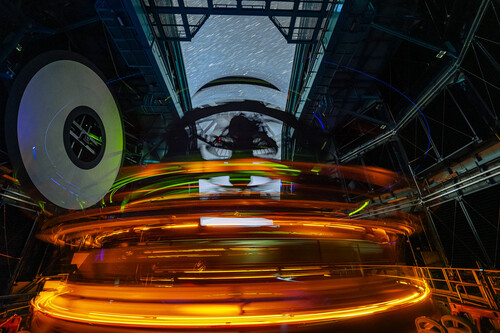The world’s largest digital camera is now operational. What it has captured in just a few hours of testing is overwhelming.
It’s part of the Vera C. Rubin Observatory. Located at Cerro Pachón in Chile, the observatory points its digital camera—roughly the size of a small car—toward the sky. Its 3,200-megapixel sensor is the largest and most powerful ever built.
After more than two decades of development, the wait has been worth it. The camera does more than take “pretty pictures” of the universe. In just 10 hours, it produced results that surpassed years of work from other observatories.
What it saw in just 10 hours. During that brief period, the Rubin Observatory captured 10 million galaxies. That’s only 0.05% of the 20 billion galaxies the team hopes to catalog during the primary mission.
It also discovered 2,104 previously unknown asteroids—an impressive achievement compared with the roughly 20,000 asteroids found annually by all other observatories combined. Rubin completed 10% of that total in less than half a day. Among those discoveries were seven near-Earth asteroids, all outside Earth’s trajectory.
The world’s largest camera. Funded by the U.S. National Science Foundation (NSF) and the Department of Energy, the Rubin Observatory “will capture more information about our Universe than all optical telescopes throughout history combined,” NSF director Brian Stone said.
 Trifid and Lagoon nebulae seen by the LSST camera at the Vera C. Rubin Observatory
Trifid and Lagoon nebulae seen by the LSST camera at the Vera C. Rubin Observatory
It’s a matter of brute force. The 6,170-pound Legacy Survey of Space and Time (LSST) camera is mounted on a 27.5-foot telescope. Each image covers an area of the sky equal to 45 full moons.
Who was Vera Rubin? The observatory is named after American astronomer Vera Rubin, who provided the most conclusive evidence for the existence of dark matter—the invisible substance believed to make up 85% of the universe’s matter.
Over the next 10 years, the Rubin Observatory will build a dynamic, ultra-precise map of the sky that will play a key role in understanding the nature of dark matter.
The observatory will generate about 20 terabytes of data each night. Over its 10-year lifetime, the dataset will grow to an estimated 500 petabytes. In its first year alone, it’s expected to gather more data than all previous optical observatories combined.
Images | NSF-DOE Vera C. Rubin Observatory




View 0 comments